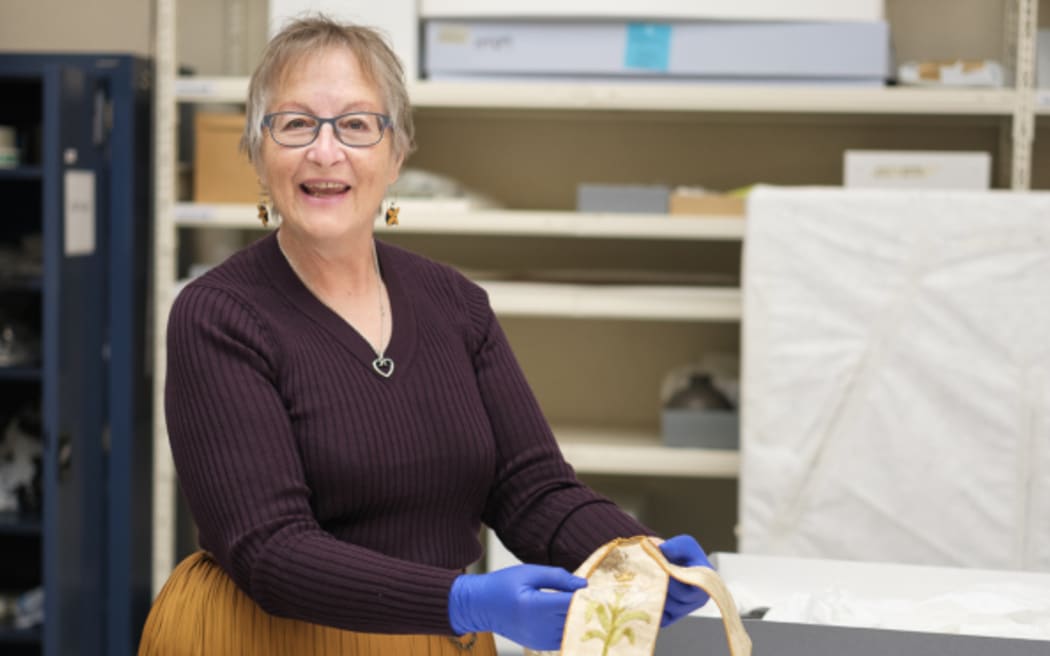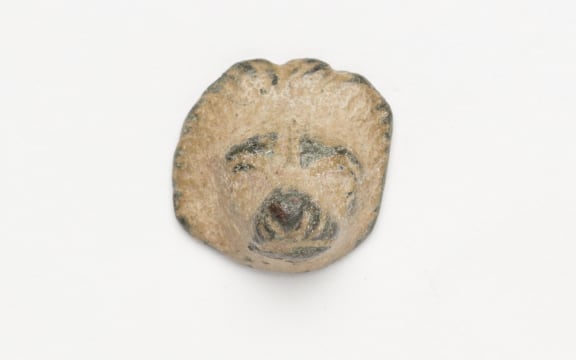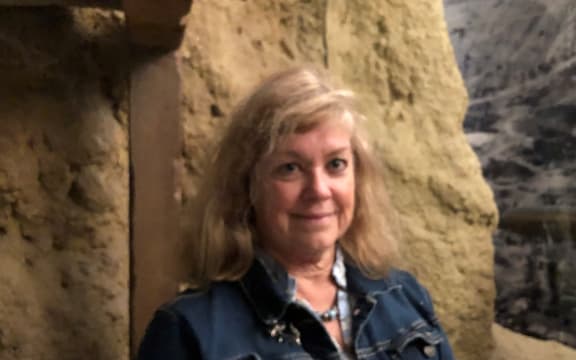A new book sheds light on part of the Gallipoli campaign a world away from the horrors of battle

Gail Romano, Auckland Museum's associate curator of war history, with artifacts belonging to World War I Reverend Charles Bush-King Photo: Richard Ng
You can't have missed the Gallipoli story as the movies, documentaries, essays and books capture what it was like for New Zealand troops in their eight-month campaign on the Peninsula.
But this ANZAC Day the Auckland War Memorial Museum has published a book that sheds light on a little-known aspect of the conflict, called In The Midst of Death We Are In Life.

A dog amulet found in Turkey by a Kiwi World War I soldier at Gallipoli, now held at the Auckland Museum Photo: Supplied
The title reverses the word order from The Book of Common Prayer, used during the First World War in the committal at the end of a funeral service.
It's a small but fascinating volume centred around objects the museum has in its collection and letters home the soldiers wrote about their surroundings.
The book is edited by the museum's associate curator of war history, Gail Romano, an historian interested in the often-overlooked fringe experiences of war.
She points out that when writing to family members about their experiences they often didn't want to talk about the horrors of war, so they described their surroundings instead. For many of the classically educated men, they understood that they were on a site of layers and layers of history; of Greek heroes, biblical descriptions and roman ruins.
They also recorded the beautiful sunsets, unusual bugs and birds, and fields of flowers they were surrounded by.
Lieutenant-Colonel Dr Percival Fenwick, a doctor, wrote about the "dreadful time" of treating the wounded, but he also recorded the banality of the men's daily reality and the wonderful sunrises, the fleet of warships "like toys on the water", and said "like a beautiful white bird, the hospital ship glittered pure white, as if she was a dove with folded wings, waiting as a symbol of peace".
The museum's archaeology collection manager, Deirdre Harrison, contributed to the book's section on the landscape of Gallipoli. The French and British soldiers who landed further south dug trenches in what turned out to be an archaeological site at Cape Helles - much of what they found is now on display at the Louvre in Paris.

Deirdre Harrison is Auckland Museum's Archaeology Collection Manager Photo: Alexia Russell/The Detail
One of the objects that made it home to New Zealand, and is now held by the museum is a little metal amulet. It was found by a kiwi soldier on rest and recreation, in Troy. The tiny figure of what looks like a lion or a dog is not on display, but kept in the museum's vaults.
"It was a surface find and with no context ... we can't date it," says Harrison. "And we don't know what it's associated with." It may have been some form of decoration for armour, clothing, a shield or furniture.
Harrison says there's no way of knowing how many New Zealand homes have these little treasures picked up and pocketed by our men.
The amulet was found in 1918 by Major T Barrett, who was from Wiri, south of Auckland, but the cursive script of the era written on a donation card gives few other clues about it.
There's a picture of the amulet in the book, which is available at the Museum store, or through its website.
Check out how to listen to and follow The Detail here.
You can also stay up-to-date by liking us on Facebook or following us on Twitter.


